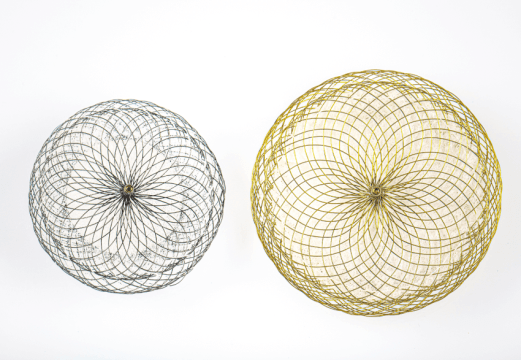ALT FLOW device for left atrial to coronary sinus shunting in symptomatic heart failure patients.
In the treatment of heart failure (HF), significant improvement in patient quality of life and prognosis has been achieved through appropriate medical treatment and, in some cases, the use of devices. However, in certain cases, satisfactory clinical improvement cannot be achieved.

One of the characteristics of this pathology is sustained increase in filling pressure, so its treatment and its reduction are the main proposed objectives. Some strategies have been used to decrease this overload, either by improving treatment through monitoring or by allowing for its “decompression” into lower-pressure chambers. These strategies have been based on creating a shunt through the interatrial septum (IAS), with or without a device.
However, it has recently been demonstrated that this strategy does not offer symptomatic or clinical benefits in patients with preserved or mildly impaired ventricular function (REDUCE LAP-HF II). All these devices used the IAS as the location for the shunting.
In a feasibility study conducted by Hibbert et al., called ALT FLOW, the APTURE (Edwards) device was placed to create a shunt from the left atrium (LA) to the coronary sinus (CS) through percutaneous atriotomy (the device allowed for a shunt with an internal diameter of 7 mm and 4 branches). This device allows for physiological flow and minimizes the risks of embolization into systemic circulation.
Read also: Post PCI Functional Assessment for Focal Lesion and Stent Underexpansion Detection.
The study was an open, single-arm trial conducted at 18 centers in the United States and Canada. It included patients with chronic HF in functional class II who had been hospitalized for HF or required intravenous diuretics, and who were already receiving optimal treatment. Right heart catheterization was also conducted, with a requirement of wedge pressure (WP) >15 at rest or >25 during exercise, with a WP-to-right atrial pressure (RAP) delta >5.
The primary safety endpoint was the combination of major cardiovascular, cerebrovascular or renal events, and reintervention at 30 days. Researchers analyzed Success in device placement and clinical success.
Device placement was attempted in 87 patients, with successful placement in 79 of them (91%). Mean age was 70.5 years; 53% of subjects were male, and the average ejection fraction was 59%. There was a high prevalence of obesity (mean body mass index: 33.6), hypertension (92%), and diabetes (44%). Patients were highly symptomatic, with a KCCQ score of 38.3; about 90% of them were NYHA class III.
Read also: VASC-OBSERVANT II Substudy: Impact of Vascular Complications after TAVR.
The pre-specified primary endpoint occurred in 2.3% of patients, 2 of whom required emergency surgery: one due to coronary sinus perforation and another due to embolization. Clinical and procedural success was observed in 88.5% of cases, with a fluoroscopy time of 28 minutes and the use of 48 mL of contrast. Analyzing hospitalizations at 6 months, there was a heart failure hospitalization rate of 3.8%, compared with 44.3% in the year prior to the intervention. Symptomatic improvement was observed according to KCCQ, with an improvement of ≥20 points in 57% of cases and an improvement in functional class I and II from 8% at baseline to 56% at one month, and from 12% at baseline to 67% at 6 months (P <0.001).
Regarding hemodynamic parameters, right heart catheterization at 20W showed a reduction in wedge pressure (WP) at 3 months (average decrease of 7 mmHg) and 6 months (average difference of 7 mmHg).
Conclusions
Shunting with the APTURE device to decompress the left atrium offers the theoretical advantage of preserving septal anatomy, and flow direction towards the coronary sinus and then to the right atrium reduces the possibility of paradoxical embolization. A sustained and significant reduction in WP and symptoms was observed at 3 and 6 months, so a randomized study should be considered to assess the outcomes.

Dr. Omar Tupayachi.
Member of the Editorial Board of SOLACI.org.
Original Title: Left Atrial to Coronary Sinus Shunting for Treatment of Symptomatic Heart Failure.
Reference: Hibbert, Benjamin et al. “Left Atrial to Coronary Sinus Shunting for Treatment of Symptomatic Heart Failure.” JACC. Cardiovascular interventions vol. 16,11 (2023): 1369-1380. doi:10.1016/j.jcin.2023.03.012.
Subscribe to our weekly newsletter
Get the latest scientific articles on interventional cardiology





